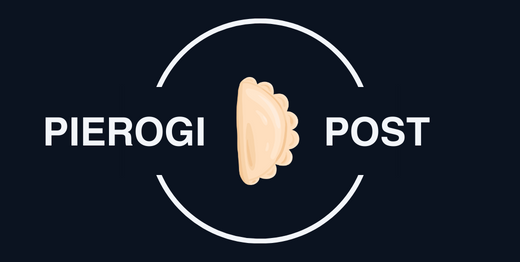For centuries, foraging has been an essential part of Polish culture, offering not only sustenance but also a deep connection with nature. From dense forests to rolling meadows, Poland is a treasure trove for those seeking the bounty of the wild. Whether it’s searching for mushrooms in the cool shadows of ancient trees, picking vibrant berries along sunlit trails, or gathering aromatic herbs from the wild, foraging in Poland is an experience that’s as much about tradition as it is about flavor. In this blog post, we’ll explore the history of foraging in Poland, the most sought-after wild delicacies, and how this timeless practice has become a beloved national pastime.
A Deep-Rooted Tradition: The History of Foraging in Poland
Foraging in Poland is much more than a seasonal activity; it’s a tradition that has been passed down through generations. In a country with a long history of agriculture and subsistence living, wild food gathering was a necessity for many rural families, especially during lean times. The natural abundance of Poland’s forests, meadows, and wetlands has always provided a source of nourishment. Over the years, foraging became not just a means of survival but a cultural ritual that brings families together and fosters a deep respect for the land.
Poles have a particular love for mushroom picking (grzybobranie), which remains one of the most cherished foraging traditions. Every autumn, families venture into the woods with baskets in hand, looking for prized mushrooms like porcini (borowik), chanterelles (kurki), and saffron milk caps (rydze). In fact, mushroom foraging is so ingrained in Polish culture that it often sparks friendly competition over who can gather the most or the best specimens.
In addition to mushrooms, the forests offer a plethora of wild berries, such as blueberries (borówki), cranberries (żurawina), and wild strawberries (poziomki). These fruits are used to make jams, juices, and desserts that have been a staple in Polish kitchens for centuries. The practice of foraging for wild herbs, such as nettle (pokrzywa) and sorrel (szczaw), also plays an essential role in Polish culinary and medicinal traditions. Herbal remedies and teas, passed down through families, remain popular today as natural alternatives to modern medicine.
The Polish Love Affair with Mushrooms
When you think of foraging in Poland, mushrooms are probably the first thing that comes to mind—and for good reason. Poland’s vast forests, which include ancient woodlands like the Białowieża Forest, are some of the best places in Europe to find a wide variety of mushrooms. Poles are known for their exceptional knowledge of wild fungi, and it’s not uncommon for mushroom foraging to be passed down as a family skill.
Among the most prized species is the porcini mushroom (borowik), also known as the king of the forest. Its meaty texture and earthy flavor make it a favorite in Polish cuisine, where it’s used in soups, sauces, and pierogi fillings. Chanterelles (kurki), with their distinctive golden color, are another popular find. They’re often sautéed with butter and herbs or added to scrambled eggs for a simple, yet delicious, meal.
Mushroom foraging is typically done in the fall, especially after a good rain when conditions are optimal for mushroom growth. Poles take great care in identifying edible mushrooms and distinguishing them from potentially poisonous varieties. Local foragers often rely on generations of knowledge, while others consult mushroom identification books or take part in guided foraging tours led by experts. It’s a skill that requires patience and respect for nature, which makes finding a perfect porcini or chanterelle all the more rewarding.
Wild Berries: Sweet and Tangy Treasures
While mushrooms may dominate the foraging scene in the fall, summer is the season for wild berries. Poland’s forests and meadows are brimming with an array of berries that have been enjoyed by generations. These juicy fruits are not only delicious but packed with nutrients, making them a healthy and sustainable source of food.
Blueberries (borówki) are among the most common wild berries found in Polish forests, particularly in the mountainous regions. They’re typically gathered in mid to late summer and used to make classic dishes like blueberry pierogi, tarts, and syrups. Polish blueberries are smaller and more flavorful than their cultivated cousins, offering a tangy sweetness that makes them ideal for cooking and preserving.
Another beloved berry is the wild strawberry (poziomki), known for its intense flavor despite its tiny size. Wild strawberries often grow along forest edges and meadows, and they’re prized for their fragrant aroma and sweet taste. They’re best eaten fresh or used to flavor desserts, but they’re also commonly made into jams and compotes to be enjoyed year-round.
For a more tart option, Poles also forage for cranberries (żurawina) in boggy areas and marshlands. Cranberries have long been a part of Polish culinary traditions, often made into a sweet-tart sauce that pairs perfectly with roasted meats. Cranberry juice is also a favorite drink, both for its refreshing taste and its health benefits, as it’s rich in antioxidants and vitamin C.
Foraging for Wild Herbs: Poland’s Natural Pharmacy
Foraging in Poland isn’t just about mushrooms and berries; it also extends to wild herbs, which have been used for both culinary and medicinal purposes for centuries. In Polish villages, the use of wild herbs in teas, poultices, and tinctures remains a widespread practice, blending ancient wisdom with modern health trends.
One of the most commonly foraged herbs is nettle (pokrzywa), which can be found in forests and fields throughout the country. Though often considered a weed, nettle is highly nutritious and has been used in Polish kitchens for generations. Rich in vitamins A and C, iron, and calcium, nettle leaves are commonly brewed into tea or used in soups and pestos. The flavor is mild and earthy, making it a versatile ingredient in Polish cuisine.
Another popular wild herb is sorrel (szczaw), a tangy, lemon-flavored plant that grows abundantly in the wild. Sorrel is a key ingredient in zupa szczawiowa, a traditional Polish sour soup often served with hard-boiled eggs and potatoes. It’s also used in salads and sauces to add a refreshing, slightly acidic flavor.
In addition to these common herbs, Poles also forage for other plants like dandelion (mniszek), wild garlic (czosnek niedźwiedzi), and yarrow (krwawnik). Each plant has its own culinary uses, as well as traditional medicinal benefits that have been passed down through generations of Polish families.
Foraging Today: Tradition Meets Modern Sustainability
While foraging is a long-standing tradition in Poland, its popularity has surged in recent years as part of a broader global movement toward sustainability, organic food, and reconnecting with nature. More and more Poles, including city dwellers, are embracing foraging not just for its culinary benefits but for the sense of tranquility and connection it offers. Walking through a Polish forest, listening to the sounds of nature, and gathering wild food is a meditative experience that encourages mindfulness and appreciation for the environment.
Foraging tours and workshops have also become increasingly popular, particularly in Poland’s national parks and nature reserves. These tours, led by experts, teach participants how to identify edible plants, mushrooms, and berries while emphasizing the importance of sustainability. Foraging responsibly is key to preserving Poland’s natural biodiversity, ensuring that these wild foods remain plentiful for generations to come.
Conclusion: The Joy of Foraging in Poland
Foraging in Poland is more than just gathering wild food—it’s a journey into the country’s deep-rooted cultural traditions and a celebration of its natural abundance. Whether you’re collecting mushrooms in the autumn, picking berries in the summer, or gathering wild herbs throughout the year, foraging offers a unique way to connect with nature and experience the flavors of Poland’s forests and fields.
Whether you’re a seasoned forager or a curious beginner, Poland’s diverse landscapes offer endless opportunities to explore and enjoy the fruits of the wild. As you wander through Poland’s ancient forests or sun-dappled meadows, you’ll discover that foraging is not just about filling your basket; it’s about engaging with the land, learning from the past, and embracing a more sustainable way of living. So grab a basket, head to the woods, and experience the timeless tradition of foraging in Poland.




